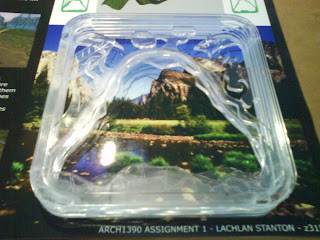Dospike:This creature is similar in many ways to the Pterasaurus. However rather than minding its own business, it is actually quite savage. Covered in spikes and horns, it uses these to attack its prey, which it can hear from miles away with its large ears. Still able to fly, but due to the size of its wings it can only fly short distances and prefers to be on land. The Dospike will also hunt in packs to maximise its efficiency.



Quadraphibion:The natural habitat of this creature is underwater. This is noticeable by the platypus like bill, webbed feet and webbed wings. These creatures are relatively helpless, so they are found in packs of many. Their only form of defense is their tail. The quadraphibion is not restricted to water, it is also land dwelling. However it is this ability to survive on land and in water that helps it escape its prey.



Night Walker:This creature can only be seen at night. It is very devilish in nature with its horns and colour. It can survive for many months without food or water, therefore being found in the harshest of conditions. They normally walk on the rear legs, but for added speed and stability they can travel on both their hands and feet.



Bearonyx:
This creature resembles a bear that we have all seen. However much like the Pterosaurus, it has spikes down its spine for protection. Most of its features distantly resemble humans, but much more prehistoric. The Bearonyx cannot really be found in one spot, it tends to roam from place to place. It is a very dumb creature, which is why it can be found roaming around, almost as if it were lost.



Pterosaurus:This creature lives high in the rocky mountains. It has wings to enable it access to areas that other creatures could not get to simply on foot. It also has hands and feet in order to rummage for food, and built shelter. The Pterosaurus tends to be a lonely creature that sticks mainly to itself. These creatures can still be seen down on ground level, but are easily frightened and will probably fly away. Even though they live in cavernous mountains, they are green in colour which allows them hide in trees. Its name comes from a mixture of Pterodactyl (wings) and Stegosaurus (spikes on its spine).

















































